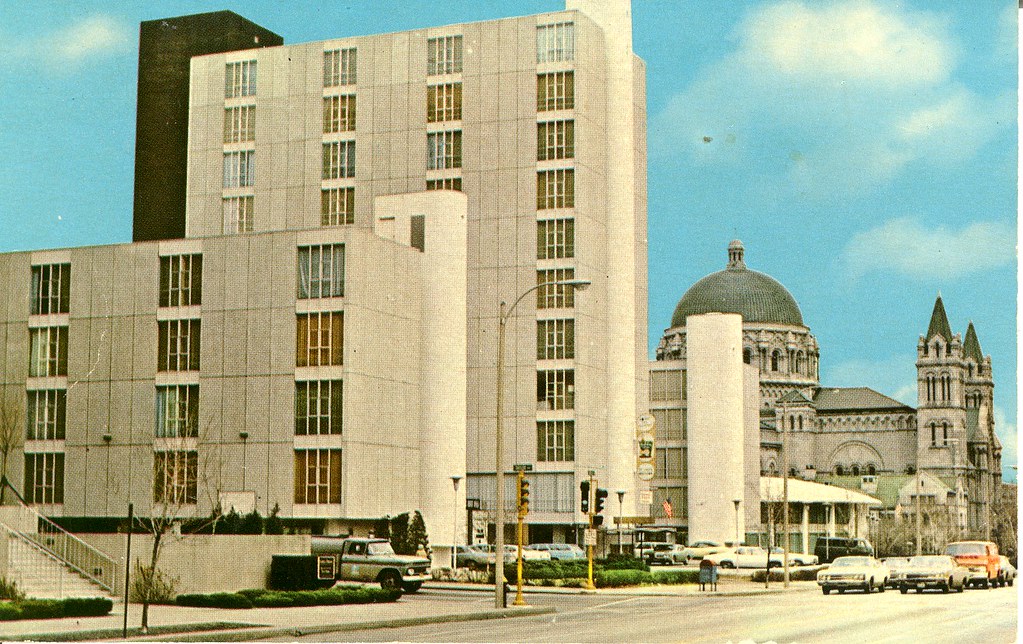by Michael R. Allen
 In 1966, the DeVille Motor Hotel became a Holiday Inn after the Vatterott family purchased the building. The modernist motel had opened in 1963 as part of the New Orleans-based DeVille chain, and was designed by renowned architect Charles Colbert. Although the motor hotel enjoyed a swanky reputation as the DeVille, its years as the Holiday Inn are its most famous among St. Louisans who recall dances and social events held in the public spaces. The postcard shown above dates to the time of the change in ownership.
In 1966, the DeVille Motor Hotel became a Holiday Inn after the Vatterott family purchased the building. The modernist motel had opened in 1963 as part of the New Orleans-based DeVille chain, and was designed by renowned architect Charles Colbert. Although the motor hotel enjoyed a swanky reputation as the DeVille, its years as the Holiday Inn are its most famous among St. Louisans who recall dances and social events held in the public spaces. The postcard shown above dates to the time of the change in ownership.
 The rear of the postcard shows the new name: The Holiday Inn Midtown. Midtown was St. Louis’ Uptown, where the high-rollers mixed with the young professionals at the new lounges and restaurants of reborn Central West End. The spirit of optimism was high, and distinctly urban place names like “Midtown” were embraced as strongly as the idea that the city would rebound. The new Gateway Arch and Busch Stadium were signs of downtown’s new life, and the DeVille was a sign that the Central West End was as posh as ever for social life.
The rear of the postcard shows the new name: The Holiday Inn Midtown. Midtown was St. Louis’ Uptown, where the high-rollers mixed with the young professionals at the new lounges and restaurants of reborn Central West End. The spirit of optimism was high, and distinctly urban place names like “Midtown” were embraced as strongly as the idea that the city would rebound. The new Gateway Arch and Busch Stadium were signs of downtown’s new life, and the DeVille was a sign that the Central West End was as posh as ever for social life.
The end of the era was abrupt; the Holiday Inn Midtown closed in 1977, and was purchased by the Archdiocese for conversion to the San Luis Apartments (senior housing). Still, by 1977, Lindell Boulevard had attracted many new modernist buildings from Grand west to Kingshighway and the Central West End’s renewal was in full force. The DeVille was as sleek as ever, even with its less glamorous new use. Now that the San Luis Apartments are closed and the neighborhood’s stability is a sure bet, what better time is there to return the DeVille to its earlier glory? The old Bel Air Motel to the west, the city’s first motel dating to 1958, is posed to become a Hotel Indigo. The optimism about the city and the Central West End embodied by these buildings has paid off, and these mid-century landmarks have much to offer the present age as reminders of the power of architecture to convey the hope of an era.
(Postcard courtesy of Sheila Findall’s family collection.)
